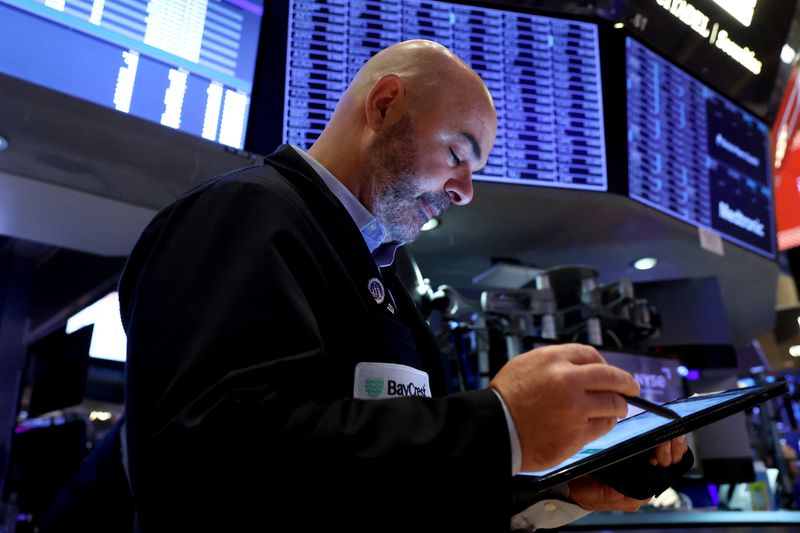[ad_1]
(Reuters) – U.S. stock index futures rose ahead of a truncated trading session on Friday, with Wall Street’s main indexes on track for monthly gains as the holiday shopping season kicked off on a brisk note and investor attention shifted to retail stocks.
Wall Street’s main indexes closed lower on Wednesday, the eve of the Thanksgiving Holiday, after data showed signs of sticky inflation, bolstering bets the Federal Reserve could stay cautious on interest-rate cuts in 2025.
Investors will closely monitor stocks of retailers expected to attract millions of shoppers with their steep Black Friday discounts, as customers commence their year-end holiday shopping.
The National Retail Federation, a U.S. trade group, expects roughly 85.6 million shoppers to visit stores this year, up from 76 million on Black Friday in 2023.
Shares of Target rose 0.8%, TJX climbed 0.6%, Walmart edged up 0.5% and Nike added 0.4% in premarket trading.
“This mega promotional event is a mixed blessing for retailers. It provokes such shopping mania in the quest for a good deal that around three quarters of people will actually put off spending in the run-up to the event,” said Susannah Streeter, head of money and markets at Hargreaves Lansdown.
“During the promotional period, it also means selling at a discount… (which) means a smaller profit margin at a time when they are being squeezed by rising staff costs.”
At 05:35 a.m. ET, Dow E-minis were up 159 points, or 0.35%, S&P 500 E-minis were up 17.75 points, or 0.30%, and Nasdaq 100 E-minis were up 79.5 points, or 0.39%.
Futures tracking the small-cap Russell 2000 index rose 0.9%.
The main indexes were on track for monthly gains, with the benchmark S&P set for its biggest one-month rise since February. An index tracking small-cap companies hit a record high earlier in the week and was poised for its steepest monthly rise in nearly a year.
President-elect Donald Trump’s victory in U.S. presidential elections earlier this month, along with his Republican Party controlling both houses of Congress, provided the latest boost for equities.
Investors were pricing in expectations Trump’s policies on tax cuts, tariffs and deregulation could spur economic growth and corporate performance. However, concerns that his proposals could stoke upside price pressures, slow the pace of the Fed’s monetary policy easing and weigh on global growth prevail.
Traders expect the central bank to lower borrowing costs by 25 basis points at its December meeting, but see the Fed pausing rate cuts in January and March, according to the CME Group’s FedWatch.
[ad_2]
Source link

